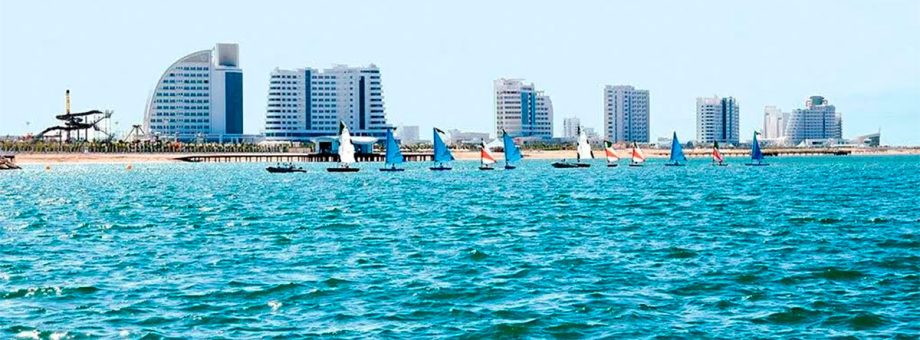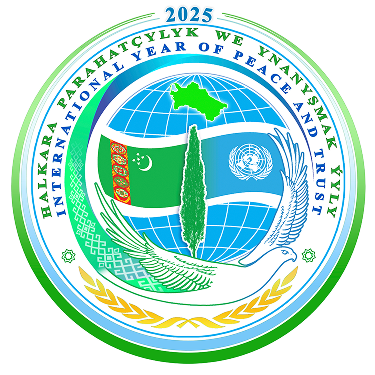August 12 – Caspian Sea Day

The Caspian Sea has an oceanic past: according to scientists, it is one of the remnants of the ancient Tethys Ocean, which once covered vast areas of the continent. At the same time, the Caspian Sea has a distinguishing feature – it is isolated from the world ocean, which is why it is sometimes called a salt lake. However, it is indeed a sea, and this status was confirmed in the recently signed Convention on the Legal Status of the Caspian Sea (2018, Aktau, Kazakhstan).
For many thousands of years, the ancient Hazar generously bestowed people with fish and other seafood, having substantial biological resources that supported the fishing activities of the Turkmen coastal residents and shaped their way of life. The natural treasure trove includes the Garabogazkol Bay, which is the world's largest deposit of mirabilite. The maritime shelf and coastal areas are rich in hydrocarbons. There are also countless mineral resources here, especially hydromineral resources, including iodine-bromine raw materials.
The biota is diverse both in the sea waters and in the bottom depths. Vegetation is not very abundant, although subtropical valleys are found on the southern shores. Bays and shallow lagoons, rich in algae and plankton, are a true paradise for waterfowl. Every year, flamingos rest and feed here during migration and sometimes stay for the whole winter if it is not too cold. They have become a local attraction, along with flocks of other waterfowl and semi-aquatic birds that stop in the Caspian in spring and autumn.
If the Caspian Sea is a true natural wonder, then the "Avaza" National Tourist Zone is a pearl on its shore. Natural sandy beaches, the sea breeze, and air warmed by the gentle sun provide everything necessary for complete rest and health improvement. The Turkmen sector of the sea adjacent to Avaza is recognized as environmentally safe. Specialists from the "Hazarecocontrol" Service monitor the condition of sea water, coastal waters, and soil, making the Avaza boundaries one of their most important observation points.
Greening of the National Tourist Zone is a separate item in the National Forest Program. Afforestation of the coastal area, which is complex in soil and climatic conditions, is conducted scientifically, taking into account more than a century of experience planting various plant species here. The basis of this work includes the most effective agronomy techniques, hydrogeological data of the area, fluctuations in the Caspian Sea level, and hydrometeorological factors. The result of the landscaping and mass seasonal planting around Avaza hotels, cottages, and health resorts has been the improvement and healing of the soil, reduced wind erosion of the surface, and preservation of groundwater.
Today, the tourist city developed on the seashore has become the calling card of Turkmenistan, and its monumental buildings and original design elements for the navigable Avaza River effectively emphasize the thoughtful sophistication of the resort and "green" architecture of the man-transformed natural landscape.
Blooming, Avaza is becoming a place of active socio-cultural life, a center for health tourism, family recreation, and hosting international forums, including those on environmental protection. In short, this wonderful corner of nature transformed into a recreation center lives a vibrant life, becoming a platform for promoting environmental initiatives and strengthening ecological partnerships in the region. Regarding the preservation of Caspian bioresources, Turkmenistan emphasizes its commitment to strengthening and expanding international cooperation aimed at ensuring sustainable development and protecting the ecological safety of the Caspian marine environment.
This is reflected in the country's accession to the UN Framework Convention for the Protection of the Marine Environment of the Caspian Sea (Tehran Convention). Next year marks the twentieth anniversary since it came into force. Within the framework of the Convention, four protocols have been developed, including on regional preparedness, response, and cooperation in combating oil pollution incidents (Aktau, August 12, 2011); on protection of the Caspian Sea against pollution from land-based sources and activities (Moscow, December 12, 2012); and on environmental impact assessment in a transboundary context (Moscow, July 20, 2018). Notably, Ashgabat became the place of adoption of one of the protocols in May 2014 – concerning the conservation of Caspian biodiversity. Another protocol is in preparation, dealing with information exchange. The Convention is the legal basis for the five Caspian countries to make joint decisions on protecting and reproducing biological resources. The day it came into force in 2006 – August 12 – is now celebrated as Caspian Day.
Equally important is the signing by the five Caspian littoral states on August 12, 2018, in Aktau (Kazakhstan) of the Convention on the Legal Status of the Caspian Sea, which is currently being ratified by the parties. According to the document, the Caspian has a special status recognized as an inland sea. Moreover, three of the five Caspian states, including Turkmenistan, have no access to the global ocean.
Protection of biodiversity and landscapes is carried out in two very different state nature reserves of the Balkan velayat – Syunt-Hasardag, which can be called a botanical reserve, and encompassing coastal wetlands and marine waters – Hazar reserve, one of whose goals is to protect the wintering grounds of waterfowl. Within their boundaries, scientists study hydrodynamic processes (underwater volcanoes, mud volcanoes, fluids), sea level fluctuations that influence climatic factors and weather conditions in various parts, and through them – river runoff into the sea and atmospheric precipitation levels.


 NEWS
NEWS